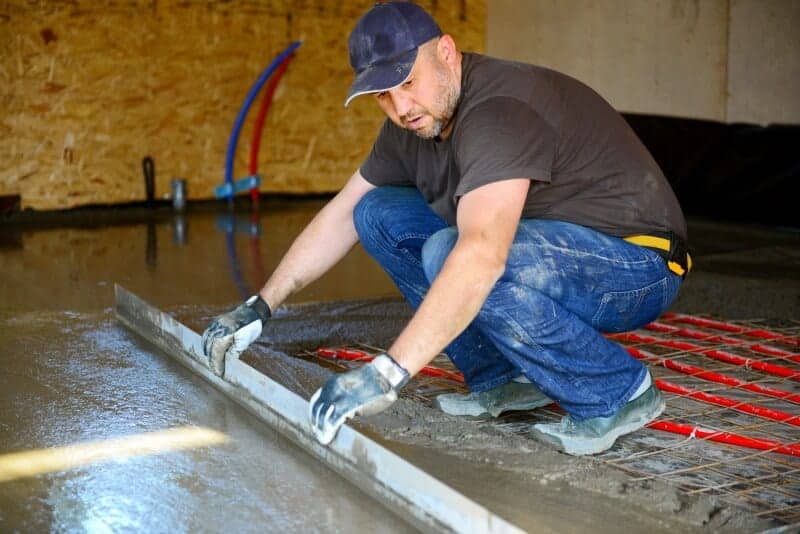Expansion joints for hardwood floors: How to proceed
As a natural floor covering made of wood, parquet has many advantages. However, its naturalness also has an effect in that the parquet works. So in order to be able to enjoy a beautiful and intact parquet floor in the long term, expansion joints must be taken into account. In the following you will find out how to proceed best in this respect when laying parquet parquet .
Elongation joints at parquet – why?
Parquet is made of wood and wood works.
In the event of temperature fluctuations or changes in humidity, parquet reacts accordingly with swells and dwindling. This means that it expands depending on the room conditions and pulls back together.
In order to give the parquet the necessary leeway, expansion joints must be observed as soon as they are laid, as they compensate for the spring and shrinkage behaviour of the parquet.
In addition, appropriate expansion joints ensure reduced sound transmission and therefore additionally optimise the result of the required impact sound insulation.
Where do you need expansion joints for parquet?
In the first place, expansion joints must be taken into account when laying parquet in the edge areas of the room.
The basic rule is a wall distance of at least 2 mm per metre of floor – so if the room is 4 m wide, 8 mm expansion joint is required.
With the usually recommended distance of 10 to 15 mm one is on the safe side in rooms of average size, in very large rooms the expansion joint should be correspondingly wider.
From a room dimension of 8 m width and 12 m length, an additional expansion joint is required by leaving out a gap between the parquet elements.
If an elongation joint is already included in the screed, one must also be inserted in the same place in the parquet.
It is well known that parquet all around requires expansion joints on the walls.
However, expansion joints for parquet must be taken into account not only where, but also in other places, where the floor can encounter immovable elements.
These include door frames, stairs, radiator pipes, end profiles e.g. for transitions to other floor coverings and much more.
In the case of heavy furniture, such as kitchens or built-in cupboards, it is advisable to install them before laying the hardwood flooring and then take into account the corresponding expansion joint under the plinth.
If this is not possible, the hardwood flooring under the built-in furniture on the other side requires twice the distance to the wall, as it can only work in one direction.
Is there a difference between bonded and floating laid parquet?
Expansion joints are always necessary for all hardwood flooring, regardless of whether it is glued over the entire surface or installed as a floating installation.
The difference, however, is that glued parquet works less, as it is fixed to the subfloor.
The smallest extent occurs with glued floorparquet, as it is not only connected to the screed, but the material is also glued transversely to each other.
Correspondingly, the expansion joints may be smaller when the parquet is glued, depending on the recommended manufacturer’s instructions. Even with head joints, less distance is sufficient, as the hardwood flooring unfolds its greatest expansion in width here.
Different, on the other hand, with floating parquet. Here, the parquet panels are only loosely laid on the substrate and accordingly have high spring and shrinkage behaviour.
Therefore, in this case, it is strongly advisable to maintain a greater distance in the expansion joints.
What happens if parquet has no expansion joints?
If parquet is laid without paying attention to the correspondingly large expansion joints, the wood cannot work sufficiently.
The parquet panels collide when they are expanded or stand by fixed room elements and begin to bulge.
This not only looks ugly, but can even lead to permanent damage to the parquet.
For example, when individual parquet panels break out of the gluing or the click system breaks.
Floating parquet can still bulge even if the ground is only on one side.
If no expansion joints have been adhered to as part of the parquet laying, you can also install them afterwards.
This involves a certain amount of effort, but it is always worthwhile compared to the inconvenience of a damaged parquet.
Tips for erecting expansion joints
Observance of expansion joints is particularly challenging for laymen.
The use of spacers, which are placed between the wall and the parquet when laying and removed after the laying work has been completed, has therefore proved to be successful.
This ensures that a uniform expansion joint is maintained. In commercially available laying sets for parquet, such wedges or blocks are usually already included or can be retrofitted in the DIY store.
For protection – and of course also because of the more attractive appearance – the expansion joints can be covered accordingly at the end: With skirting boards in the wall areas, rails or profiles at transitions or doors or pipe rosettes or similar covers for heating pipes etc.
Of course, expansion joints can also be filled with joint sealing compound. Here, however, it is essential to ensure that it is a suitable, permanently elastic material, otherwise the parquet will not be able to work.
* Last updated on 2024-07-27 / We are using affiliate links / All images are served from the Amazon Product Advertising API.
Table of Contents





